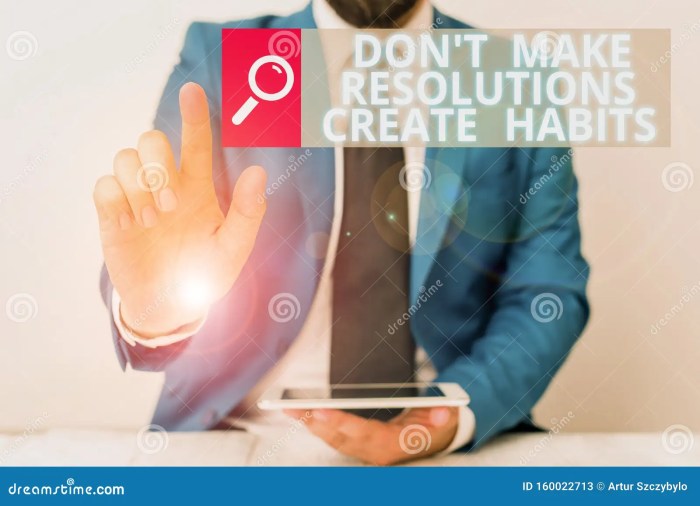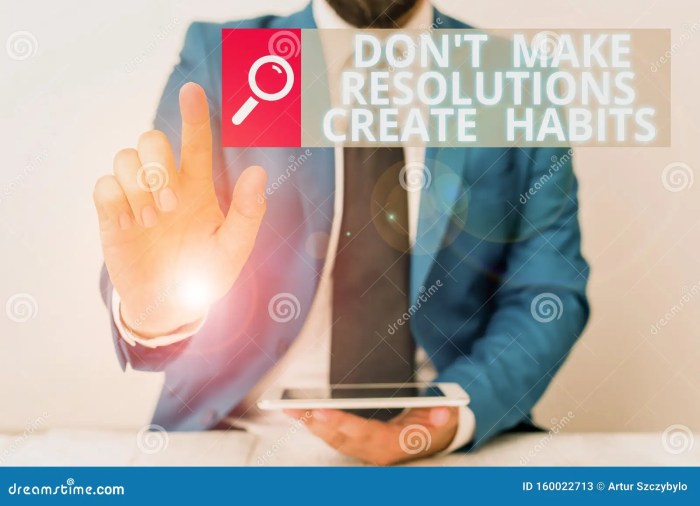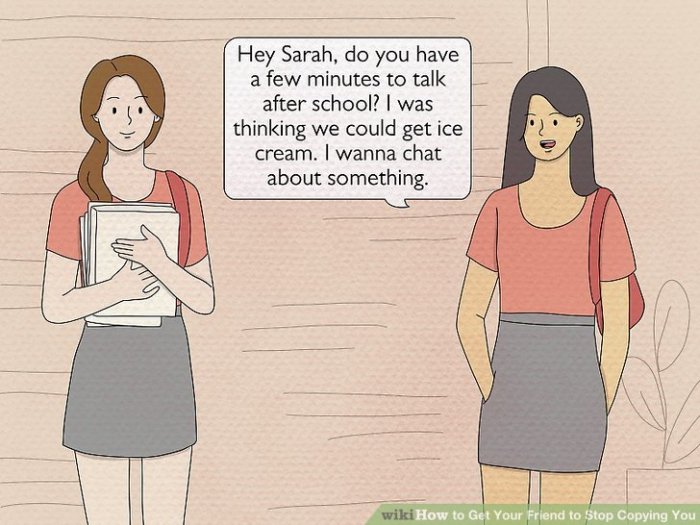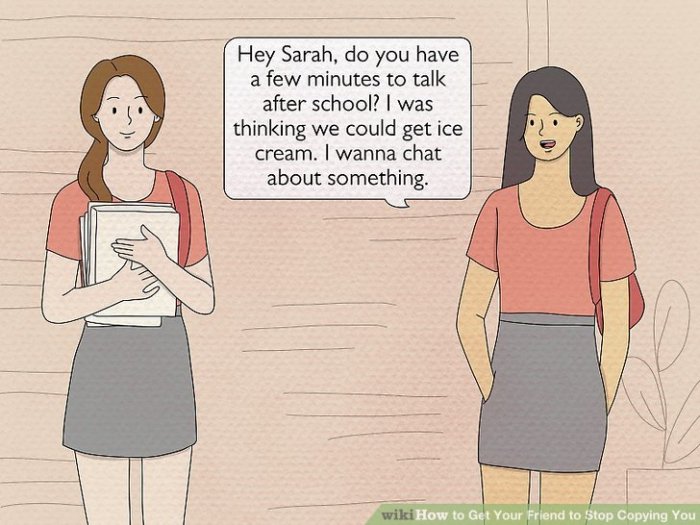Manage Friendship when in a Relationship is a crucial aspect of navigating modern relationships. Balancing the needs of a romantic partner and cherished friendships often presents unique challenges. This guide delves into the complexities of maintaining healthy connections while in a relationship, offering practical strategies for navigating potential conflicts and preserving meaningful bonds.
This post will cover everything from defining the dynamics of friendship and romance to effective communication strategies, setting boundaries, and prioritizing relationships. We’ll also explore how to manage conflicts, balance time and energy, and maintain friendships beyond the relationship’s duration. Get ready to learn how to strengthen both your romantic and platonic relationships!
Defining the Dynamics
Navigating the intricate dance between friendship and romance is a delicate balancing act. While love often blossoms amidst shared experiences, it can also inadvertently strain existing friendships. This often happens when the dynamics shift, and individuals prioritize their romantic relationships over their friendships, potentially leading to misunderstandings and hurt feelings. Recognizing these potential conflicts is crucial for maintaining healthy relationships in all their forms.Understanding the interplay between these two types of relationships requires recognizing the unique needs and expectations associated with each.
Romantic partnerships are often characterized by a deep level of intimacy and emotional connection, while friendships typically revolve around shared interests and mutual support. However, these distinct characteristics can sometimes collide, creating friction and tension. Recognizing these points of potential conflict, and understanding the misconceptions that often accompany them, is the first step toward successful navigation.
Potential Conflicts in Balancing Friendship and Romance
Often, conflicts arise when the needs of a romantic partner overshadow the needs of a friend. A partner might require significant time and emotional energy, leading to a decreased availability for friends. This shift can be difficult for friends, especially if they’re not included in the couple’s activities. This can create feelings of exclusion and jealousy, and even make a friend feel like they’re being replaced.
Examples of Friendship Strain Due to Romance
A common example involves friends who frequently spend time together. When one friend enters a romantic relationship, the couple might prefer to spend time together, excluding their friends. This can create a sense of distance and lead to the friend feeling overlooked. Another scenario involves differing opinions on the romantic partner. A friend might strongly disagree with the choices or actions of the partner, creating tension with the friend who is in the relationship.
It’s important to understand that these situations don’t necessarily imply wrongdoing; rather, they point to the evolving dynamic and the need for open communication.
Common Misconceptions
A common misconception is that a romantic relationship should automatically supersede all other relationships. In reality, nurturing friendships is vital for a well-rounded life, and a healthy relationship recognizes and respects the importance of existing friendships. Another common misconception is that friends should automatically understand and support the couple’s decisions, even if those decisions impact their friendship. In actuality, a healthy friendship acknowledges the need for individual space and personal boundaries.
These misconceptions often lead to hurt feelings and strained relationships.
Importance of Open Communication
Open communication is paramount in navigating the complexities of balancing friendships and romance. Honest conversations about expectations, boundaries, and time allocation are crucial. For example, openly discussing how much time each person can realistically dedicate to friends and romantic partners can prevent resentment and misunderstandings. Such conversations are essential for building a foundation of trust and mutual respect.
Comparing and Contrasting Needs of a Romantic Partner and a Close Friend
| Characteristic | Romantic Partner | Close Friend |
|---|---|---|
| Emotional Needs | Deep intimacy, emotional support, validation, affection | Shared interests, understanding, support, acceptance |
| Time Commitment | Significant time dedicated to quality time, exclusive dates, and shared experiences. | Flexible time commitment, occasional meet-ups, social gatherings. |
| Communication Style | Direct, honest communication, often emotional and personal. | Open, honest communication, often focused on shared experiences and mutual understanding. |
| Expectations | Loyalty, commitment, exclusivity, shared goals. | Acceptance, shared interests, mutual respect, trust. |
This table illustrates the distinct needs of each relationship. Recognizing these differences helps individuals approach the management of these relationships with a more balanced perspective.
Communication Strategies

Navigating the complexities of friendship and relationships requires clear and respectful communication. Open dialogue about boundaries, expectations, and potential conflicts is crucial for maintaining healthy connections. Honest communication allows for a deeper understanding of individual needs and preferences, fostering a stronger bond between friends and partners.Effective communication, in this context, is not just about expressing thoughts and feelings, but also about actively listening and responding empathetically to the other person’s perspective.
It involves a willingness to compromise and find solutions that work for everyone involved. By establishing clear communication channels, we can prevent misunderstandings and foster a more harmonious environment.
Effective Methods for Discussing Boundaries and Expectations
Open and honest conversations are key to establishing clear boundaries and expectations. Use “I” statements to express your feelings and needs without placing blame on the other person. For example, instead of saying, “You always make me jealous,” try “I feel uncomfortable when…” This approach fosters a more constructive dialogue. Actively listen to the other person’s perspective and validate their feelings, even if you don’t agree with them.
Addressing Potential Jealousy or Possessiveness
Jealousy and possessiveness are common concerns in friendships and relationships. Instead of avoiding the topic, address it directly and respectfully. Focus on the underlying emotions driving the feelings. For instance, if a friend seems possessive, ask them how they feel when you spend time with others. Understand the reasons behind their concerns.
Remember, jealousy often stems from a need for reassurance and a desire for a strong connection. Finding healthy ways to address this can strengthen the bond.
Respectful Decline of Invitations
Declining invitations or activities that could potentially put either your friend or partner in an uncomfortable situation requires tact and sensitivity. Be clear and direct, explaining your reasoning without making the other person feel bad. For example, “Thanks for the invitation, but I’m already committed that evening.” or “I appreciate you thinking of me, but I don’t feel comfortable attending that event.” Be mindful of your tone and language to ensure your response is respectful and avoids any misinterpretations.
Talking Points for Discussing the Impact of the Relationship
Discussing the impact of a new relationship on existing friendships is essential for maintaining healthy dynamics. Some talking points to consider include:
- How the relationship will affect time spent with each friend.
- The potential for overlapping social activities and how to manage them.
- Ways to ensure that both the relationship and friendships are nurtured and supported.
- How to create opportunities to maintain existing friendships while balancing the new relationship.
- The need for open communication to address any concerns or challenges that arise.
Communication Styles and Effectiveness
Different communication styles affect how effectively boundaries and expectations are addressed. The following table Artikels various styles and their associated effectiveness:
| Communication Style | Description | Effectiveness in Managing Dynamics |
|---|---|---|
| Assertive | Direct, clear, and respectful expression of needs and boundaries. | High. Facilitates open discussion and mutual understanding. |
| Passive | Avoiding conflict and expressing needs indirectly. | Low. Can lead to resentment and unresolved issues. |
| Aggressive | Expressing needs and boundaries in a demanding or hostile manner. | Low. Creates conflict and damages relationships. |
| Passive-Aggressive | Expressing disagreement indirectly or through subtle negativity. | Low. Causes misunderstandings and resentment. |
Maintaining Boundaries
Navigating the complexities of friendships and relationships often requires careful consideration of boundaries. Setting clear boundaries is crucial for maintaining healthy connections and preventing misunderstandings. This involves understanding your needs and those of your friends and partners, and communicating those needs effectively. Without defined boundaries, conflicts and resentments can easily arise.Establishing healthy boundaries is an active process, not a passive one.
Navigating friendships while in a relationship can be tricky, but it’s totally doable! It’s important to remember that your friendships are still valuable, even if you’re now sharing your life with someone else. Plus, a new Tupac restaurant is coming to New York! tupac restaurant coming to new york sounds amazing, and hopefully, it’ll be a great place to catch up with those friends who aren’t your significant other.
Ultimately, maintaining healthy boundaries and open communication with both friends and your partner is key.
It requires consistent communication and a willingness to adapt as circumstances change. This is particularly true when multiple relationships intersect. A clear understanding of what you’re comfortable with in each relationship is essential.
Defining Relationship Boundaries
Defining boundaries within a friendship involves understanding what you’re comfortable with in terms of emotional support, time commitments, and shared activities. For example, are you comfortable confiding in your friend about relationship issues? Can you accept that they’re spending time with their partner without expecting to be included in every activity? These are questions that need honest self-assessment.Defining boundaries within a romantic relationship involves a similar process.
Are you comfortable with your partner being close to a certain friend group? What is your expectation regarding the amount of time your partner dedicates to their friends? Open communication and a willingness to compromise are essential to finding common ground and maintaining both the relationship and friendships.
Navigating Boundary Crossings
Sometimes, friends or partners may unintentionally cross boundaries. It’s important to address these situations calmly and assertively, while maintaining respect for the other person. If a friend repeatedly shares overly personal information, for example, you could say, “I appreciate you sharing, but I’m not comfortable discussing this with you right now.”If a partner frequently cancels plans with you to spend time with friends, you can discuss your feelings and expectations.
For example, “I value our time together, and it’s important to me that we make each other a priority.” These conversations should be direct and respectful, focusing on your feelings and needs.
Maintaining Independence in a Relationship
Maintaining independence in a relationship is crucial for personal growth and preventing resentment. This doesn’t mean distancing yourself from your partner but rather ensuring you have time and space for yourself, your interests, and your existing friendships. Making time for hobbies, pursuing personal goals, and nurturing friendships outside of the relationship can strengthen both your individual identities and your relationship as a whole.
It prevents you from feeling overwhelmed by the relationship or dependent on your partner for all your needs and fulfillment.
Managing Friend Exclusion
If a friend feels excluded or neglected due to the relationship, it’s important to address the situation proactively and empathetically. Acknowledge the friend’s feelings and explain that the change isn’t intentional but a result of the relationship dynamics. Open communication and reassurance can help alleviate feelings of exclusion.For example, you could say, “I know this might be different than what we’re used to, but I value our friendship and I want to keep it strong.
We can still find ways to spend time together, just not in the same way.” Active listening and a willingness to adjust are crucial to navigating this sensitive situation.
Preventing Conflicts and Misunderstandings
Regular communication about boundaries, expectations, and time commitments can prevent conflicts. A clear understanding of everyone’s needs helps to avoid misunderstandings. This involves both self-reflection and open dialogue.Schedule regular check-ins with both your partner and friends to ensure everyone feels heard and respected. This proactive approach is vital to maintaining harmonious relationships.
Prioritizing Relationships
Navigating the complexities of friendships and romantic partnerships often requires careful balancing. This delicate act involves understanding the unique needs of each relationship and recognizing when one might demand more attention than the other. Successfully managing these dynamics hinges on open communication, flexibility, and a commitment to nurturing both connections.Maintaining a healthy balance between friends and partners is essential for overall well-being.
Ignoring either group can lead to strained relationships and a sense of isolation. The key lies in recognizing that both types of relationships are valuable and deserve dedicated time and effort.
Identifying Relationship Priorities
Recognizing when one relationship demands more attention is crucial for maintaining harmony. Situations requiring heightened focus in one relationship often arise during significant life events, periods of emotional distress, or times of transition. For example, a friend facing a personal crisis might need more support than usual, while a partner experiencing career challenges might require more understanding and empathy.
Understanding the specific needs of each relationship allows for tailored responses.
Methods for Managing Time Commitment
Clear communication about time commitments is vital. Schedule dedicated time for each relationship, whether it’s weekly coffee dates with friends or regular date nights with your partner. Establishing these consistent touchpoints allows both parties to feel valued and ensures both connections remain strong. Honest conversations about availability and expectations can prevent misunderstandings and disappointments. For instance, a partner’s demanding work schedule may require a shift in date night arrangements, while a friend’s upcoming travel plans might necessitate adjusting the frequency of social gatherings.
Compromise and Balance
Compromise is key to maintaining a healthy balance between relationships. Finding a middle ground involves recognizing the importance of both friendships and romantic partnerships. For example, if a friend requests a significant time commitment during a busy week for your partner, consider rescheduling a less crucial event or finding a way to incorporate the friend into existing plans with your partner.
This demonstrates a willingness to adapt and prioritize the well-being of both relationships.
Showing Appreciation
Demonstrating appreciation for both friends and partners is essential. The methods for expressing gratitude vary depending on individual preferences. Here’s a table showcasing diverse ways to show appreciation:
| Method | Example (Friends) | Example (Partners) |
|---|---|---|
| Acts of Service | Helping with a task they’re struggling with, like moving or running errands. | Doing chores around the house or cooking a special meal. |
| Quality Time | Scheduling a dedicated time for a movie night or a weekend getaway. | Planning a romantic evening out or taking a trip together. |
| Words of Affirmation | Writing a heartfelt note expressing your appreciation for their support. | Telling your partner how much you admire their strength and dedication. |
| Gifts | Bringing a small gift to a friend’s event or a thoughtful token of appreciation. | Presenting a thoughtful gift or a surprise gesture to show affection. |
| Physical Touch | Giving a warm hug or a comforting pat on the back. | Holding hands, cuddling, or giving a loving kiss. |
These examples demonstrate a range of appreciation strategies. The most effective methods often involve understanding the specific preferences of each individual. By acknowledging and addressing these needs, you can foster stronger and more fulfilling connections with both friends and partners.
Managing Conflicts and Challenges: Manage Friendship When In A Relationship
Navigating the complexities of friendships and romantic relationships often involves inevitable conflicts and challenges. Understanding the potential triggers and developing effective strategies for resolving disagreements is crucial for maintaining healthy connections. This section dives into common conflict triggers, resolution strategies, and how to handle delicate issues like jealousy and competing loyalties.
Common Conflict Triggers
Relationships, whether friendships or romantic partnerships, are built on shared experiences and values. However, differences in perspectives, communication styles, and even differing priorities can create friction. Misunderstandings, unmet expectations, and a lack of clear communication can quickly escalate into conflicts. Sometimes, external pressures or conflicting goals can also become significant triggers.
Strategies for Resolving Conflicts
Effective conflict resolution involves active listening, empathy, and a willingness to compromise. Firstly, create a safe and respectful space for discussion. Clearly define the issue at hand, avoiding accusatory language. Encourage open communication, allowing each party to express their perspective without interruption. Actively listen to understand the other person’s viewpoint, even if you disagree.
Focus on finding common ground and solutions that address the needs of all parties involved. If the conflict escalates, consider seeking mediation or professional guidance.
Addressing Jealousy or Possessiveness
Jealousy and possessiveness can stem from insecurity, fear of loss, or a desire for control. Understanding the underlying causes is crucial for addressing these issues. Open and honest communication is essential. Discuss feelings openly and honestly, ensuring both parties feel heard and validated. Establishing clear boundaries and expectations can help mitigate the potential for jealousy to arise.
If jealousy persists, consider seeking professional support to address any underlying issues.
Navigating friendships while in a relationship can be tricky, but it’s totally doable. Sometimes, it feels like you have to choose between your partner and your friends, but that’s not always the case. Just like figuring out the best way to deal with Ticketmaster’s frustrating ticketing issues (check out this article on the US Senate hearing about us senate holds hearing on ticketmaster operations the solutions are there for the taking ), you can find solutions to maintain healthy relationships with both friends and partners.
Open communication and clear boundaries are key to keeping everyone happy and involved.
Managing Competing Loyalties
Navigating situations where loyalties clash is a common challenge. Whether it’s a friend’s conflicting opinions or a partner’s commitment to family, maintaining healthy relationships requires careful consideration. Open communication is paramount. Discuss expectations and boundaries upfront, allowing all parties involved to understand the commitments and limitations. Compromise is key; finding a balance that respects everyone’s needs and commitments is essential.
If the situation becomes overwhelming, consider re-evaluating the nature of the relationships involved.
Warning Signs of Trouble
Maintaining healthy relationships requires vigilance. Recognizing potential warning signs can prevent further damage and facilitate timely intervention. Constant criticism, manipulation, or a pattern of disrespect are clear indicators. A significant decrease in communication, emotional distance, or avoidance of important conversations are also potential warning signs. Unresolved conflicts, repeated arguments, or a lack of effort in maintaining the relationship can point to deeper issues.
If a pattern of negative behaviors emerges, it may be time to reassess the relationship’s health and consider professional guidance.
- Lack of Communication: A significant decrease in communication, or avoidance of important conversations, often precedes deeper problems.
- Constant Criticism or Manipulation: A pattern of negativity or control can be a major red flag, signaling a potentially unhealthy dynamic.
- Emotional Distance: Growing emotional detachment or avoidance of intimacy are signs of potential trouble in a relationship.
- Unresolved Conflicts: Repeated arguments without resolution often indicate deeper issues that require addressing.
- Lack of Effort: A noticeable decline in effort from one or both parties to maintain the relationship is a warning sign.
Balancing Time and Energy
Juggling friendships and romantic relationships requires careful consideration of time and energy allocation. Successfully navigating these dual commitments demands proactive strategies to prevent burnout and ensure both relationships thrive. Effective management involves recognizing individual needs and priorities, setting realistic boundaries, and maintaining open communication with all parties involved.Successfully navigating these dual commitments demands proactive strategies to prevent burnout and ensure both relationships thrive.
Effective management involves recognizing individual needs and priorities, setting realistic boundaries, and maintaining open communication with all parties involved. Understanding the delicate balance between quantity and quality of time is key.
Navigating friendships when you’re in a relationship can be tricky, right? It’s about finding that balance, making sure everyone feels included and respected. Just like how a Premier League footballer like Christian Fuchs is apparently betting big on the future of esports, showing commitment to both your relationship and your friendships is key. This strategic approach to managing different commitments mirrors the need for careful consideration when managing friendships within a relationship.
Ultimately, maintaining strong connections with both your partner and friends is a rewarding challenge, but one that’s totally worth the effort.
Time Management Strategies
Establishing a schedule that accommodates both friendships and romantic relationships is crucial. A well-structured schedule allows for dedicated time slots for each relationship, fostering a sense of value and importance for each. This structured approach ensures that both parties feel prioritized and supported.
- Prioritize and Schedule: Allocate specific time blocks in your schedule for both romantic partners and friends. This could include weekly date nights, regular phone calls with friends, or monthly gatherings with your friendship group. Be flexible, but maintain consistency where possible. This structure provides a framework for both relationships.
- Set Boundaries: Clearly define boundaries around your time commitments. Explain to both your partner and friends your availability and the amount of time you can realistically dedicate to each relationship. This ensures that expectations are managed and prevents overcommitment.
- Delegate Tasks: Don’t hesitate to ask for help from friends or your partner to lighten your load. Sharing responsibilities can free up valuable time for personal connection and quality time with each relationship.
Energy Management Strategies
Recognizing and addressing potential burnout is vital for maintaining healthy relationships. Understanding your energy levels and scheduling activities accordingly is essential. Being aware of your energy reserves is a proactive step in preventing overcommitment.
- Recognize Energy Levels: Pay attention to your energy levels throughout the day. Schedule more demanding activities when you have high energy, and prioritize rest and relaxation when you’re feeling depleted. This helps maintain a balanced approach to your commitments.
- Self-Care is Crucial: Make time for activities that replenish your energy, such as exercise, meditation, hobbies, or spending time in nature. Regular self-care is an investment in your overall well-being, which directly impacts your ability to nurture your relationships.
- Say No Politely: Learning to decline invitations gracefully is a vital skill. Be upfront about your commitments and offer alternative suggestions if possible. Saying no protects your well-being and maintains healthy boundaries.
Example of Polite Decline
“Thanks so much for the invitation, [Friend’s Name]! I’d love to, but I’ve already committed to [Partner’s Name] for dinner that night. Perhaps we could catch up next weekend?”
Quality Time vs. Quantity Time
| Relationship | Quality Time | Quantity Time |
|---|---|---|
| Romantic Partner | Deep conversations, shared activities, acts of affection | Date nights, cuddling, intimate moments |
| Friends | Meaningful interactions, shared laughter, genuine connection | Regular calls, social gatherings, shared experiences |
This table illustrates the importance of quality time over quantity. Deep connection and meaningful interactions are more valuable than simply spending a lot of time together. Quality time strengthens bonds and fosters deeper relationships.
Maintaining Friendship Beyond the Relationship

Navigating the complexities of relationships, especially when one ends, can be challenging. It’s not uncommon for friendships forged during a shared experience, like a relationship, to evolve or even dissolve. This section explores how to thoughtfully maintain these friendships, prioritizing healthy boundaries and mutual respect. It’s about understanding the shift in dynamics and how to adapt to it without compromising either friendship or the new personal space that may be required.A relationship’s ending doesn’t automatically erase the value of the friendships that blossomed alongside it.
Maintaining these bonds requires a conscious effort, acknowledging the changes in dynamics and the need for adjusted communication strategies. It’s about recognizing the shared history while respecting the evolving present.
Nurturing Evolving Friendships, Manage Friendship when in a Relationship
Maintaining a friendship that’s weathered a relationship’s end requires a delicate touch. Simply acknowledging the shift in your relationship and communicating that acknowledgement openly can go a long way. This doesn’t mean the friendship needs to change drastically, but rather that you both need to adjust to the new normal.
Strategies for Maintaining a Healthy Friendship Post-Relationship
Open communication is paramount. Discuss the changes in your lives and how you’re adapting to the new dynamic. Acknowledge the past while focusing on the present and future of the friendship. Regular check-ins, whether through calls, texts, or in-person meetings, help foster a sense of connection. This can be as simple as a quick text or a shared meal.
Handling a Friend’s Difficulty Accepting the Relationship
It’s important to approach such situations with empathy and understanding. Avoid getting caught in the middle of a friend’s emotional response to your relationship’s end. Acknowledge their feelings, but don’t feel obligated to justify your choices or the relationship’s dynamics. Focus on maintaining your own emotional well-being. If the difficulty persists and the friendship becomes strained, it’s important to respect their feelings while establishing healthy boundaries.
Avoiding Emotional Entanglement
It’s crucial to respect your own personal space and boundaries. Recognize that your friend’s relationship dynamics are not your responsibility. Focus on your own life and relationships, and allow your friend the same space. Maintaining a healthy distance from their relationship struggles is essential for maintaining a healthy friendship. This isn’t about being uncaring, but rather about protecting yourself from unnecessary emotional burdens.
Respecting Personal Space
Respecting personal space is essential for a healthy friendship. This involves understanding that each individual has their own life, their own choices, and their own relationships. Avoid becoming overly involved in the details of your friend’s life, especially if it relates to their new romantic relationship. Encourage their happiness but don’t become a sounding board for their every thought or feeling.
Focus on your own life and the unique experiences of your friendship, maintaining a healthy emotional distance from their personal life, particularly regarding the new relationship.
Last Recap
In conclusion, managing friendships while in a relationship requires intentional effort and open communication. Prioritizing both relationships, setting clear boundaries, and actively addressing conflicts are key to maintaining harmony. This guide provides actionable strategies for navigating the complexities of balancing these two important facets of life, ensuring that both your romantic partner and your friends feel valued and respected.
Ultimately, the goal is to cultivate healthy and fulfilling relationships that enrich your overall well-being.







